#corydora fry
Text
1 week old peppered corydora catfish 🤗
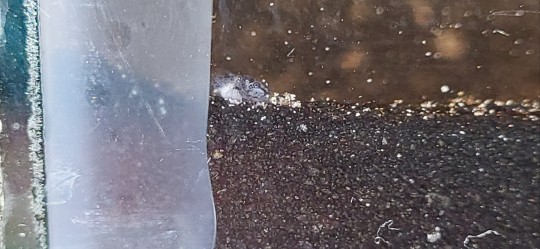
2 notes
·
View notes
Text
AHHHH! I have a baby Panda Cory fry in my tank!!! I wasn't planning on breeding them so haven't bothered to save any eggs. I had assumed they were all being eaten but seems one egg was well enough hidden that no hungry mouths found it XD

'Congratulations Spike, you're a dad! You now have to pay fry maintenance.'
'Whuuup?'

4 notes
·
View notes
Text




silly fishies.
#look how big that first fry is getting#i honestly didn't expect platy fry to develop as slow as like. a kitten but it's fun to watch them slowly develop#hades.txt#fish#betta fish#spangle#platy fish#corydoras
3 notes
·
View notes
Text
Van der Linde gang as freshwater aquarium fish (part 2)
Trelawny- Corydora

Swanson- Clown loach

Mary-Beth- Guppy
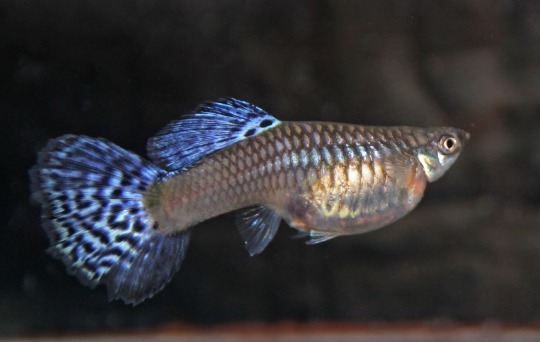
Kieran- Pea puffer
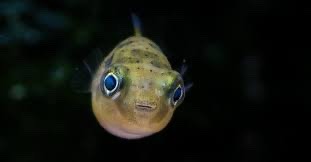
Uncle- Banjo catfish

Tilly- Eyespot pufferfish

Karen- Betta

Abigail- Pearl cichlid

Jack- Firemouth Cichlid fry
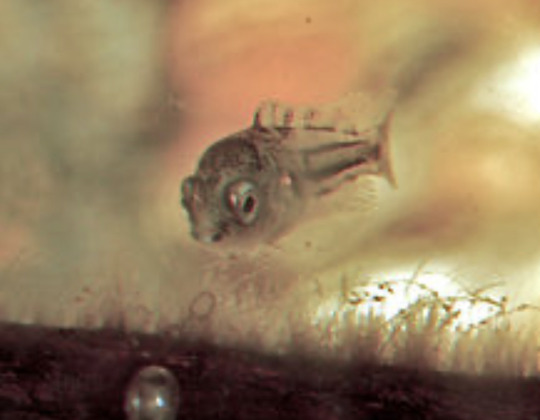
Pearson- Pacu

#rdr2#rdr1#red dead redemption#red dead redemption 2#van der linde gang#fish fans find this post please#fish#aquarium fish
22 notes
·
View notes
Text
Most of the comments on this article are lovely, but this one stood out for me:
When I became disabled and mostly housebound I was bored and depressed. We set up a freshwater aquarium with the idea that I could distract myself with "eye candy." I thought that fish were pretty but mostly mindless creatures that simply ate, pooped and reproduced. Still, it would be soothing to watch the aquarium.
I was so, so wrong. As I studied the tank denizens going about their lives I watched them interact. They chose mates and friends. They squabbled with rivals. They engaged in play. A corydoras catfish became injured and its friends boxed it into a corner next to the heater, supervising it until it was better. The angelfish couple laid eggs and vigorously defended their offspring from other fish, shepherding the fry around in a small school and teaching them to forage for food. The fish also watched me and came to recognize me, seemingly as fascinated with me as I was by them. The weather loaches joyfully danced about and stroked my arms with their whiskers when I cleaned the tank, twining their long bodies sinuously through my fingers and playing with the siphon.
The obsession grew and I discovered the joy of large cichlids. Big, unruly and boisterous, they were woodchippers with fins where other fish were concerned. But these big guys were incredibly smart. They played with brightly colored toys like Legos and rubber balls. They came when called by name. They caught treats in midair. One, a red devil named Nero, was given a jewel cichlid fry as food. But he didn't eat her. Curiously, this 14-inch monster decided to take the 2-inch jewel cichlid as his mate. He kept her inside a floating toy and pushed her from one end of the tank to the other so that she was always with him. She happily lived inside the toy, coming out to eat and to sleep beside him in a gravel nest at night. Another, a Texas cichlid, decided that *I* was his mate. He would slam the aquarium lid up and down at night to wake me for attention and charge aggressively at my husband if he got too close. This fish would also lure live feeders to him by setting one of his food pellets out in the open and hiding behind a lava rock to ambush them as they became hungry and came out from safety to eat the pellet.
There is so much more going on in the minds of these animals than humans give them credit for. It would be lovely to dive and see them in their natural habitat. Fish might seem like brainless living baubles at first glance... but look closer. Closer
10 notes
·
View notes
Text
@thenervousbookworm I'd be thrilled to show you the fish!!


This is Kitchen, my new betta!! He's in racecars old tank now that I've put racecar in the 20 gal. Kitchen is SO so so tiny look how small


Here's race cars new tank!!
And in it he has 6 new friends, baby corydora catfish!! Here's a few of them



Their names are French fry and the big macs!
12 notes
·
View notes
Text



Some pictures of the pygmy corydora fry I had last year…second has the tip of my finger for scale.
Plus, a slightly older baby whose grown up stripes were starting to come in!

#the little whiskers KILLED me they were so so cute#i ended up going from 6 cories to 12…had to give some to my lps but I hope they’re doing well#fishblr#pygmy corydoras#corydoras pygmaeus#my tanks#10g#photo
2 notes
·
View notes
Text
youtube
Despite its small size, Gateshead Guppies is packed with a wide variety of fish, including some rare and beautiful species. In this video, I explore tank after tank, showcasing everything from common favorites like guppies, endlers, and bettas to rare finds like Santa Maria endlers, ruby barbs, and paradise fish. Whether you're a fan of livebearers, cold-water fish, or simply enjoy seeing vibrant, healthy fish, there’s something here for everyone.
One of the first tanks that caught my eye was filled with corydoras, including bronze and albino varieties. As I moved through the shop, I came across guppy tanks featuring stunning strains like mosaic guppies and black tail guppies, with healthy, colorful males on full display. The owner of the shop breeds many of the fish himself, so you can see the care that goes into maintaining the tanks and fish. The steel blue endlers were another standout—just be cautious if you're looking to buy females, as they can store sperm and you might end up with a surprise batch of fry!
Moving along, I came across some of my favorite fish, the bettas, or Siamese fighting fish. These were housed in larger tanks than you’d typically find in chain stores like Pets At Home, and they were priced much lower too, which is always a bonus. If you’re a betta fan, you’ll appreciate the variety and care these fish receive here.
The paradise fish was another highlight for me. These cold-water anabantids, from the same family as bettas, are not only beautiful but also energy-efficient, as they don’t require a heater. I’m excited to see such unique fish in a local shop and would love to add one to my cold-water setup in the future.
I also came across various livebearers, like the gold sailfin mollies and a wide range of guppy strains, including metal head guppies, full red guppies, and blue lace guppies (which were my favorite!). If I wasn’t taking a break from guppies, I would have bought them all!
As I continued the tour, I spotted some more rare species, like the juvenile Bosemani rainbows—though their stunning orange colors haven't fully come in yet, they’ll mature into truly striking fish. There were also gold gouramis, gold panchax, and plenty of mollies, all well cared for and active.
On the opposite side of the store, I found even more treasures, like juvenile snow white bristlenose plecos and cichlid fry, both growing out in their tanks. There was another paradise fish tank with what looked like pencil fish, though the owner corrected me—they were some type of barb. His knowledge of fish is extensive, and if you’re ever unsure, he’s happy to help.
In the last section of the shop, I found a variety of other species, including swordtails, giant danios, and mascara barbs, along with a tank of CPD (Celestial Pearl Danios) and a few more albino glowlight tetras. I also caught a glimpse of SAE (Siamese Algae Eaters), but keep in mind that these fish grow quickly, so they need plenty of room.
Overall, my tour of Gateshead Guppies was an eye-opener. The owner has done an amazing job of fitting so many tanks into such a compact space, and the variety of species he stocks is impressive. Whether you're looking for livebearers, bettas, barbs, or more unusual species like paradise fish and gold panchax, you’ll find healthy, well-cared-for fish at prices much lower than large chain stores.
#tropicalfish#fishtank#aquarium#fishkeeping#aquariumhobby#bettafish#bettasplendens#guppy#molly#platy#rice fish#medaka#Youtube
0 notes
Text
Blue Snakeskin Guppies: Unveiling the Allure and Facts You Must Know

Discovering Blue Snakeskin Guppies
Unveiling Their Aesthetic Charm
Blue Snakeskin Guppies boast a distinctive and enchanting appearance with vibrant colors and intricate patterns reminiscent of snake scales. These patterns, resembling a snake's scales, run vertically along their bodies, creating a captivating visual spectacle.
Beyond Looks: A Peek into Their Character
Apart from their striking aesthetics, these guppies exhibit a friendly and inquisitive nature. Their active swimming habits, constant exploration, and interaction with other tank mates make them a delightful addition to any aquarium.
Meet the Marvels: Azure Serpent and Emerald Python
Azure Serpent:
The Azure Serpent variety dazzles with a deep blue hue adorned with intricate dark blue snakeskin patterns. The contrast between the vibrant body color and the intricate patterns creates a visually striking display.
Emerald Python:
Featuring rich green shades with emerald-like scales, the Emerald Python Guppies bring an enchanting and regal presence to any aquarium.
Essential Information about Blue Snakeskin Guppies
Origin and Size
Believed to originate from selective breeding efforts in South America, particularly Venezuela and Brazil, these guppies reach an average size of 1.5 to 2.5 inches when fully grown.
Lifespan and Temperament
With proper care, Blue Snakeskin Guppies can live for approximately 2 to 3 years. Known for their peaceful and sociable disposition, they make excellent candidates for community tanks.
Varied Appearances and Pricing
These guppies come in various colors and patterns, including "Royal Serpent," "Crimson Cobra," and "Golden Viper." Prices range between $5 to $20 per fish, depending on coloration, pattern quality, and breeder reputation.
Creating the Perfect Habitat
Native Habitat and Tank Requirements
Blue Snakeskin Guppies thrive in slow-moving freshwater bodies with abundant aquatic vegetation. For aquariums, a minimum 10-gallon tank is recommended, with slightly alkaline water conditions (pH 7.0 to 7.5) and temperatures between 72°F to 82°F.
Tank Setup and Decor
Craft an aquatic paradise with live or artificial plants, driftwood, and smooth substrates. Hiding spots, provided by decorations or dense plantings, mimic their natural habitat.
Nourishing Your Blue Snakeskin Guppies
Diet and Feeding Habits
As omnivores, they relish a diet including high-quality flakes, pellets, and freeze-dried foods. Regular feeding, supplemented with live or frozen treats like brine shrimp, ensures their vibrancy and overall health.
Breeding Insights
Reproduction and Breeding Requirements
Being livebearers, female guppies give birth to live fry. To encourage breeding, maintain optimal water conditions, higher female-to-male ratios, and provide hiding places for fry survival.
Ensuring Health and Addressing Common Issues
Health Considerations and Preventive Measures
Like any aquarium fish, Blue Snakeskin Guppies may face health issues. Regular maintenance, water quality checks, quarantine for new fish, and monitoring fish behavior help prevent and address potential problems.
Harmonious Tank Mates and Identifying Gender Differences
Compatible Tank Mates and Care Tips
Select tank mates with similar temperaments and water preferences, such as Neon Tetras, Platies, or Corydoras Catfish. Provide stable conditions, a balanced diet, and suitable hiding spots for fry.
Distinctive Gender Characteristics
Distinguish males by their smaller size, vibrant fins, and colorful patterns. Females are slightly larger with less colorful fins, and a gravid spot near the anal fin may indicate pregnancy.
Understanding Blue Snakeskin Guppies in Comparison
Similarities and Differences with Other Guppy Varieties
Share common traits with other guppies, such as size, livebearing, and an omnivorous diet. The distinctive feature lies in their intricate snakeskin pattern, setting them apart from other guppy strains.
Embark on your journey with Blue Snakeskin Guppies, blending aesthetics and care for an enriching aquarium experience. Dive into the allure of these aquatic marvels and create a harmonious underwater haven.
0 notes
Text
The catfish babies are doing good 😊🤞♥
2 notes
·
View notes
Text
Explore the World of Blue Ribbon Guppies: A Comprehensive Guide

Blue Ribbon Guppies: An Introduction
Striking Appearance and Playful Personalities
Blue Ribbon Guppies are celebrated for their vibrant colors and intricate patterns, reminiscent of prize-winning ribbons. With sleek bodies and gracefully flowing fins, these fish are not just a visual treat; they also showcase engaging personalities. Watch them playfully explore every nook and cranny of their tank, making them a delight to observe.
Standout Varieties: Sapphire Ribbon and Emerald Elegance
Among the noteworthy Blue Ribbon Guppy varieties, the "Sapphire Ribbon" boasts deep blue hues with iridescent silver streaks, creating a mesmerizing ribbon-like effect. On the flip side, the "Emerald Elegance" displays lush green shades reminiscent of emerald gemstones.
General Information about Blue Ribbon Guppies
Origin, Size, and Lifespan
Blue Ribbon Guppies hail from the tropical waters of South America, particularly in countries like Venezuela and Brazil. With a typical size of 1.5 to 2.5 inches, these petite wonders can thrive for about 2 to 3 years with proper care. Known for their peaceful temperament, Blue Ribbon Guppies easily coexist with other non-aggressive fish species.
Vibrant Colors and Patterns
As the name suggests, their appearance steals the show. These guppies showcase a dazzling array of colors—blues, greens, reds, and yellows—often adorned with intricate patterns resembling ribbons. Popular varieties include "Royal Ribbon," "Golden Streamer," and "Crimson Cascade."
Habitat and Tank Requirements
Blue Ribbon Guppies flourish in slow-moving freshwater bodies in their native habitat. To recreate a cozy home for them, a tank of at least 10 gallons is recommended, with slightly alkaline water (pH 7.0 to 7.5) and a temperature range of 72°F to 82°F. Elevate their environment with live or artificial plants, driftwood, and smooth substrates.
Feeding Blue Ribbon Guppies
Omnivorous Diet and Enthusiastic Eating Habits
These guppies relish a blend of plant and animal-based foods. Provide high-quality flakes, pellets, and freeze-dried treats as their primary diet, complemented by live or frozen indulgences like brine shrimp, daphnia, and bloodworms. Feed them small portions multiple times a day, and witness their eagerness as they swim to the surface for meals.
Breeding Blue Ribbon Guppies
Livebearing and Spawning Process
Blue Ribbon Guppies are livebearers, giving birth to live fry. To encourage breeding, maintain optimal water conditions, a higher ratio of females to males, and offer hiding places for fry. Breeding kicks off with males showcasing colorful displays, leading to mating and multiple batches of fry.
Common Health Issues and Preventive Measures
Hardy Yet Vulnerable
While generally hardy, Blue Ribbon Guppies may encounter health issues like fin rot, ich, and parasites. Ensure clean water conditions, quarantine new fish, and maintain a balanced diet to prevent concerns. Regularly monitor your guppies for any signs of distress.
Compatibility and Special Care Instructions
Peaceful Tankmates and Well-Maintained Aquariums
Blue Ribbon Guppies coexist peacefully with non-aggressive fish species. They thrive in well-maintained aquariums, requiring stable water parameters. Regular water testing and maintenance are crucial for their health and longevity.
Legal Considerations and Varieties Compatibility
Stay Informed
Stay aware of local regulations regarding Blue Ribbon Guppy ownership and breeding. Some areas may have specific requirements. Explore compatible tankmates, including Neon Tetras, Harlequin Rasboras, Corydoras Catfish, Dwarf Gouramis, Endler’s Livebearers, Cherry Shrimp, and Otocinclus Catfish.
Distinguishing Blue Ribbon Guppies from Others
Male and Female Differences and Unique Traits
Male Blue Ribbon Guppies are more colorful and display intricate patterns, while females are slightly larger with less intense coloration. Despite these differences, all guppies share fundamental characteristics such as size, livebearing, omnivorous diet, and species.
In conclusion, Blue Ribbon Guppies stand out with their vibrant blue coloration, setting them apart from other guppy varieties. Follow these guidelines for their care, and relish the beauty they bring to your aquatic world. Happy fishkeeping!
0 notes
Text
i bought four more zebra nerites to join my other one
no i don't have a problem
#nerites are algae eating machines that only occasionally nibble on plants#i don't mind bc all my plants are hardy and i can propagate most of them#the corydoras only really eat algae when its a wafer but love cleaning up missed protein food#platies graze on algae#CLEANUP CREW#the betta is just there to chill-#nah he's a voracious platy fry eater lmao#he has his role.#hades.txt
1 note
·
View note
Text
I'm happy to announce that my habrosus corydora catfish fry are a whopping 3 atoms long
0 notes
Text
Best Pet Fish as a Beginner-Pets devotee
When it comes to choosing a pet fish for beginners, there are several species that are known to be hardy, low-maintenance, and adaptable to different aquarium conditions. Here are some of the best options:

Betta Fish (Siamese Fighting Fish): Betta fish are popular due to their vibrant colors and long, flowing fins. They are relatively easy to care for and can be kept in smaller tanks. However, it's important to keep them individually as they are aggressive toward other bettas. It is one of the best fish for pets
Goldfish: Goldfish are classic beginner fish and are available in various colors and shapes. They require a larger tank with good filtration and appreciate colder water temperatures. Keep in mind that goldfish produce a significant amount of waste, so regular maintenance is necessary.
Platies: Platies are small, peaceful fish that come in a variety of colors. They are easy to care for, adapt well to different water conditions, and can be kept in community tanks. They are also prolific breeders, so be prepared for potential fry.
Swordtails: Swordtails are similar to platies and are known for their elongated lower fins. They are relatively hardy and adaptable, making them suitable for beginners. Like platies, they are livebearers, which means they give birth to live young.
Corydoras Catfish: Corydoras catfish are bottom-dwelling fish that are great for keeping the aquarium clean. They are social and should be kept in groups of at least six. Corydoras catfish are hardy and can tolerate a wide range of water conditions.
Remember, regardless of the species you choose, it's important to research their specific care requirements, provide them with a suitable environment, and maintain a healthy and clean aquarium. Regular feeding, water changes, and monitoring of water parameters are essential for the well-being of your fish.
0 notes
Note
bluebell— do you have any pets? if so, what are their names?
yes!

top to bottom, left to right: trooper, everret, patch, o'malley, gretchen
i also have a school of peppered corydoras catfish, my oldest female is named salty and i didn't name any of the fry
1 note
·
View note
Text
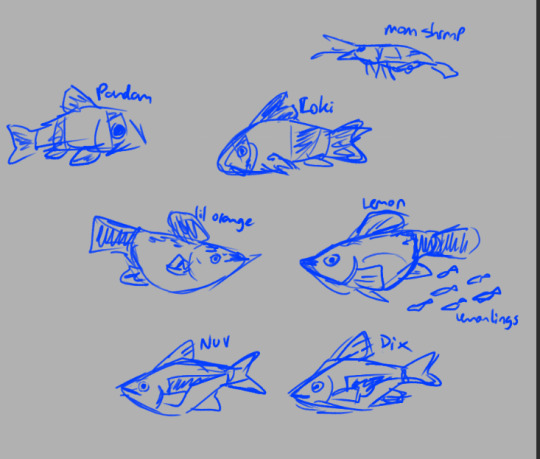
Decided to draw all the fish I have lost so far and name those that didnt have names. I think it helped a little..Keeping fish can be so fucking rough..
Causes of death of each under the cut:
Pandam: First fish to die, cause unknown. Happened like a week after purchasing them and the first group of corys. Kept away from the others while alive and was lethargic. Found him severely injured one morning (i think the pleco or snails might have attacked him in his weakened state) put him seperate in a bucket of water and a few minutes later he was gone. burried him (Like all the other deaths except the shrimp and one of the rasboras) in one of my flower pots.
Lil orange: first was flashing herself against plants and decor, her and lemon were acting strange for a long while before i finally figured out it was worms (caught them hanging out their anusses one night with a flashlight) however the worms had injured her and weakened her too much and eventhough i medicated, she succumbed to them and secondary infections/injuries.
Nuv and Dix: freak accident that im still not sure how it happened. They both ended up lodged between my filter sponges. I found one of them still alive, got them out of the filter and put them back in the water. However they had suffered too much stress and injury and could no longer swim. Put them in the bucket so they could at least die in peace and they passed a few minutes later. Then for a couple of days I noticed that another one was missing. I could only see 8 while it should have been 9 after that death. Then next filter maintenance i found a slimy fleshy heap attached to one of my sponges which i assume used to be the missing rasbora that i must have missed when i found the other one..
Mom shrimp: White ring of death. I assume it was all the waterchanges i did in a short amount of time because of the medication. She had eggs who were already quite developped. I left her in the tank to be eaten by the others so her nutrients could be recycled at least
Lemon and most of her babies: Lemon finally gave birth but most babies were stillborn and then eaten by the other fish. at least 3 fry survived but 2 are now stuck behind the filter with no way for me to get them out of there so they will probably starve to death and i feel absolutely awful about it..but at least one baby is still alive and growing, swimming around the tank grabbing lil food scraps here and there. Tentatively naming them lemon baby
After giving birth, Lemon still remained very swolen. I first thought that maybe she still had some babies inside her but even days later she was still swolen. She developped a dark spot visible under the skin and while at the beginning she could still swim fine, near the end of her life she was constantly at the surface and couldnt swim well. I tried giving her salt baths and while at first she acted more active in the salt water, it didnt really improve her situation. I was thinking of putting her down but didnt have a container to mix the clove oil in yet..then one morning I found her dead, the black spot gone but her insides looking quite red. I suspect the black spot was either a tumor or a cyst filled with blood that then popped and she internally bled out. Im still not entirely sure what caused it, maybe reproductive cancer?? Dont think it was worms again because i didnt see any. she didnt eat or poop from what i could see either.
Loki: The fish i put down with clove oil today. He had been breathing heavily for a long while. He was also paler than the others and less active. He held his fins clamped and was less reactive and seemed to struggle with getting around. When the water was medicated before i didnt see the symptoms improve and the other panda corys are active and looking healthy. And corydoras are very sensitive to salt from what ive read so i couldnt try that route. So…I decided to put him down..when i caught him in the net he struggled like crazy which made it even harder on me. I even thought about letting him go but then he would just continue to slowly waste away..and i didnt want him to suffer. So i put him in the bucket and added the mixed clove oil. he slowed down and then eventually lied on his side, i added another higher dose and then he was gone. Waited 20 minutes to make sure he was really gone and then burried him. I didnt see anything obviously wrong when I examined him before that so its again very hard on me. making me doubt myself.
Keeping fish can be heartbreaking as you cant take them to the vet or even examine them yourself easily since they are so small. So unless it's an obvious external fish disease (like ick or mold) you don't know whats wrong with them and you can only throw general medication at them in hopes it works. I will be okay..I still love my fishtank as I enjoy watching it but it sure is a cause of stress and worries..
Just..had to write that all out. If you read it all, thank you..I just..am trying my best to cope..
0 notes